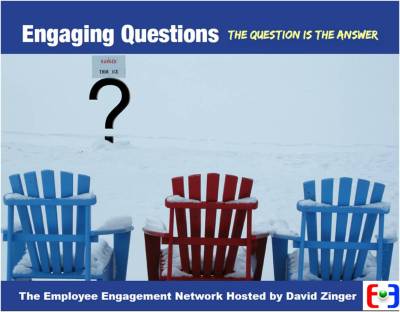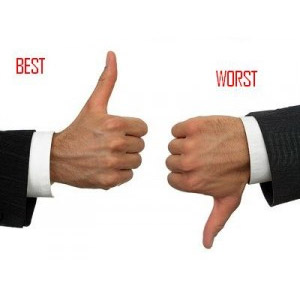This post continues my interview with Beth Miller-Herholtz, SNVC’s VP of Corporate Communications, about how her company handles employee engagement and recognition.
QSM: What is your biggest challenge in maintaining a strong organizational culture?
Beth: I think the biggest challenge is also one of our biggest strengths. We have eight unique contracts, and that means eight unique clients … So when we look at our organization culture, we have to consider how our initiatives will be received in the different client cultures.
QSM: How do you effectively engage employees when they spend most of their time working at the client site?
Beth: In our industry, where most of our personnel are onsite with our government client, it’s very easy to build loyalty to the client and forget about the company behind you. To help answer our questions, we turned to Adrian Gostick and Chester Elton’s book, The Carrot Principle, for some insight and guidance. It became the basis for our Awards and Recognition Program. We began to emphasize, both in words and in actions, that the total value of a career is a comprehensive package that includes competitive compensation and benefits along with career development, work/life balance, and an environment that welcomes everyone with talent and determination to be the best. The Recognition Program provides the means to put our words into action — action that celebrates and rewards talent, determination, and innovation.
 We incorporated awards to recognize people in key areas – Thought Leadership, Career Service, Professional Development, Innovation, and Special Incentives – all of which contribute to personal growth and corporate growth. Our program is peer-based, so anyone can recommend someone for doing great work or going the extra mile. It incorporates flexibility in that the rewards can be gift cards, W2 compensation/bonuses, or leave hours. Recognition of the individual is done as quickly as possible; in fact, that is a metric we track – how close to the action that deserved the recognition can we say “thanks” or “well done”. Where possible, we engage our client in the recognition, too, so that they see the company behind the employee who is providing that outstanding support. In addition, we announce awards in our monthly e-newsletter, which often includes photos and videos of the event.
We incorporated awards to recognize people in key areas – Thought Leadership, Career Service, Professional Development, Innovation, and Special Incentives – all of which contribute to personal growth and corporate growth. Our program is peer-based, so anyone can recommend someone for doing great work or going the extra mile. It incorporates flexibility in that the rewards can be gift cards, W2 compensation/bonuses, or leave hours. Recognition of the individual is done as quickly as possible; in fact, that is a metric we track – how close to the action that deserved the recognition can we say “thanks” or “well done”. Where possible, we engage our client in the recognition, too, so that they see the company behind the employee who is providing that outstanding support. In addition, we announce awards in our monthly e-newsletter, which often includes photos and videos of the event.
QSM: I appreciate your sharing SNVC’s model of engaging employees through recruitment, retention, and recognition. It’s obvious you take great pride in your work at SNVC. Any closing comments?
Beth: Ultimately, our corporate values of Leadership, Commitment, and Integrity are the same three values that laid the foundation for the company back in 1998. Our culture embraces the fact that we remain focused on service to our nation, knowing that our end user is the warfighter, the defender of our homeland. Of that, I think I am most proud.
QSM: Thanks, Beth!





 We incorporated awards to recognize people in key areas – Thought Leadership, Career Service, Professional Development, Innovation, and Special Incentives – all of which contribute to personal growth and corporate growth. Our program is peer-based, so anyone can recommend someone for doing great work or going the extra mile. It incorporates flexibility in that the rewards can be gift cards, W2 compensation/bonuses, or leave hours. Recognition of the individual is done as quickly as possible; in fact, that is a metric we track – how close to the action that deserved the recognition can we say “thanks” or “well done”. Where possible, we engage our client in the recognition, too, so that they see the company behind the employee who is providing that outstanding support. In addition, we announce awards in our monthly e-newsletter, which often includes photos and videos of the event.
We incorporated awards to recognize people in key areas – Thought Leadership, Career Service, Professional Development, Innovation, and Special Incentives – all of which contribute to personal growth and corporate growth. Our program is peer-based, so anyone can recommend someone for doing great work or going the extra mile. It incorporates flexibility in that the rewards can be gift cards, W2 compensation/bonuses, or leave hours. Recognition of the individual is done as quickly as possible; in fact, that is a metric we track – how close to the action that deserved the recognition can we say “thanks” or “well done”. Where possible, we engage our client in the recognition, too, so that they see the company behind the employee who is providing that outstanding support. In addition, we announce awards in our monthly e-newsletter, which often includes photos and videos of the event.